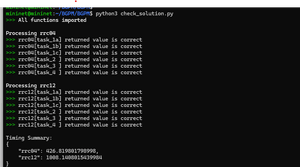$25
DSC423 - Data Analysis and Regression Assignment 05 - Variable Screening - Solved
1. Short Essay. The purpose of k-fold cross validation is often misunderstood.
a. (10 points) How do you use cross validation to select a final (or production) model? Note:
it is not the “best” of the k models you have built using cross validation.
2. PGA. The pgatour2006.csv dataset contains data for 196 players. The variables in the dataset are:
• Player’s name
• PrizeMoney = average prize money per tournament
• DrivingAccuracy = percent of times a player is able to hit the fairway with his tee shot
• GIR = percent of time a player was able to hit the green within two or less than par (Greens in Regulation)
• BirdieConversion = percentage of times a player makes a birdie or better after hitting the green in regulation
• PuttingAverage = putting performance on those holes where the green was hit in regulation.
• PuttsPerRound= average number of putts per round (shots played on the green)
• Etc.
a. (10 points) Build a complete first-order model. Evaluate the model using 5-fold cross validation. If necessary, remove a non-significant variable and repeat until you have your final first-order model. Present the model.
b. (10 points) Evaluate scatterplots to determine which second-order terms should be tested. Test them using 5-fold cross validation and add them one-by-one until you arrive at a model you feel is appropriate. Present the model.
c. (10 points) Beginning from scratch, engineer all possible second-order terms and add them to your dataset. From this dataset, produce a model using backward selection. Evaluate this model using 5-fold cross validation. Do you arrive at the same model as above? Explain.
d. (10 points) You have used two procedures to build a second-order model. Compare these two procedures. Which do you think is “best”? Explain.



